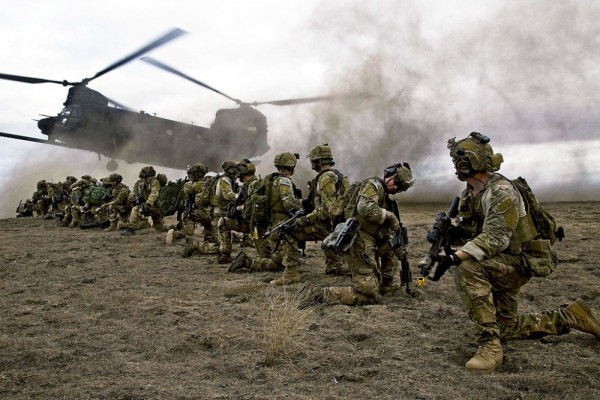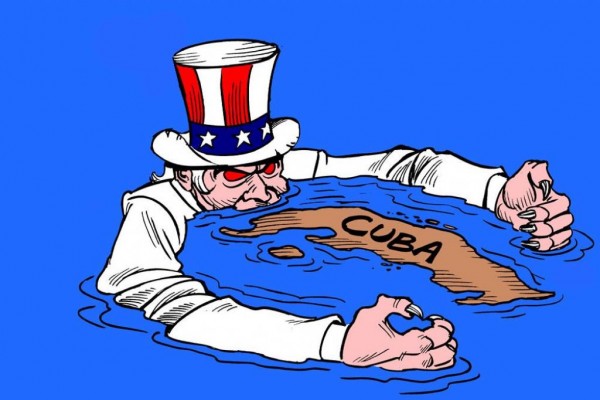The Jakarta Method: How to destabilize and control the Third World
Listen to our interview with Vincent Bevins on his new book, The Jakarta Method.
Today, the “First World” typically refers to imagined “Western” countries plus Japan, otherwise known deferentially as “developed countries.” The “Second World,” those countries associated with the defunct Soviet Union, has since been forgotten. The “Third World” as a term is usually derided today due to its racial undertones and its association with the poverty of non-white countries. These countries are now typically described using the equally derisive “developing country” category, into which many former Soviet Bloc countries are now placed. What is also forgotten, however, is that the Third World once promised the dream of post-colonial self-determination in an emerging multi-polar world system just after the end of the Second World War.
Neither Soviet nor imperialist, the Non-Aligned Movement of the so-called Third World arose early during the Cold War out of the 1955 Afro-Asian Bandung Conference hosted by Sukarno, the first president of the newly independent Republic of Indonesia. The Conference sought to increase cooperation between newly independent Third World nations against neocolonialism—representing most of the world’s population—hoping to broker international relations between the two Cold War superpowers. Following the Bandung Conference, and after a series of trial and error efforts at regime change over the next decade, the United States would perfect the means to destabilize Third World countries in the name of anti-communism—crushing movements for self-determination to align countries firmly with the West.
The Jakarta Method: Washington’s Anticommunist Crusade and the Mass Murder Program that Shaped Our World is a new book by journalist Vincent Bevins that tells the history of how the United States developed its regime toppling program during the first decades of the Cold War. By digging through declassified US State Department cables, working with academic researchers around the globe, and by conducting interviews with victims—and sometimes the proprietors and agents of regime change or consolidation—Bevins presents a storied timeline of how successive American governments openly or secretly worked to ‘align’ the Non-Aligned Movement.
Members of the Non-Aligned Movement during the 1st Non-Aligned Movement Summit, Belgrade, Yugoslavia, 1961. Photo from Wikimedia Commons.
Bevins does not dwell too much on the already well-documented ideological motivations behind the US government’s global anti-communist crusade, from domestic “Red Scare” McCarthyism to controlling corporate interests and natural resources abroad. The Eisenhower-era “Domino Theory” warning against the rapid takeover of successive countries through communist influence prevailed openly in official US foreign policy during the early Cold War and became the modus operandi for senior members of the newly established Central Intelligence Agency.
Washington’s global “anti-communism crusade” during the 1950s and 1960s is the backdrop for Bevins’s book and its central figures, including former CIA Deputy Director Frank Wisner, who experienced defeats by the Soviet Union early on in Eastern and Central Europe. He went on to develop an effective regime change program for Africa, Asia, and Latin America.
The ‘Jakarta Method’ itself was to implement anti-democracy. By bringing right-wing military elements onside through open military cooperation, supplying material, and providing tacit support for various coup attempts and successes, the US could establish anti-communist regimes by leveraging the power of the armed forces. Many of the countries the US sought to align, such as Indonesia, the Republic of the Congo, Guatemala, Chile, and Brazil, became military dictatorships led by senior officers.
In each of the cases explored in The Jakarta Method, the Third World leaders of these countries were far from communist; in fact, most had come up as anti-colonial leaders, backed by big tent coalitions including leftist revolutionaries, liberals, and even those on the religious right. None of these countries were run by communists at the time of their regime change, and even still, these Third World leaders were widely popular for their leadership in the fight for republican independence. While some countries, like Indonesia, retained democratically elected communist elements in their political systems, and had leaders who were somewhat sympathetic to the social democratic centre-left themselves, communists were still somewhat far from seizing the reins of power due to the international schisms and nationalist characteristics of Third World communist parties of the early Cold War.
Soviet-style communists were not a threat, and The Jakarta Method points out several occasions where the Second World either did not care or was too busy with its own complications to intervene strongly in the Third World. Though Mao Zedong did participate in Third World politics, recovery from the end of the Chinese Civil War, the failure of the Great Leap Forward, and continued hostilities by US-backed East Asian rivals complicated even regional intervention. The threat of the Domino Theory was largely imagined or grossly overestimated—the only apparent ‘crime’ that Third World nations would commit that pushed the US to intervene was their demand for the right to democratic self-determination.
The method itself of using internal military forces to firmly align the non-aligned country was not enough. Popular leftist or coalition governments consisted of democratic movements that were largely peaceful, and therefore unarmed. The Jakarta Method could only work so successfully when leftists gained power democratically. The Communist Party of Indonesia (PKI) was created before the Russian Revolution, out of the Dutch anti-colonial movement inspired by 19th century Marxism. The PKI adhered to a type of democratic socialist reform and did not maintain a peasant militia like those organized by Mao and Che Guevara. The party instead focused on trade unions, educating a largely illiterate new country, and agrarian reforms. In Third World countries where communist or other leftist movements did not organize armed resistance, the military held the clear monopoly of violence.
Unleashed after the collapse of the spurious 30 September Movement counter-coup that saw a number of top Indonesian generals mysteriously murdered, the military and religious paramilitaries killed and “disappeared” nearly one million people, by the best estimates, across the country between 1965 and 1966. Millions of others were imprisoned in concentration camps for years, and sometimes decades, after the purge.
Military forces alone could not force sweeping regime change over a docile population and kill or imprison millions in such a short time, especially when democratic movements were dominant. As declassified documents and research illustrate over the course of a chapter vividly illustrating the mass killing, the military seized the means to manufacture propaganda and spread fake news. Absurd stories, such as sexual violence inflicted on the murdered 30 September generals by the “witches” of the PKI’s women’s movement wing, prompted much of the violence.
The suspicious printing of the PKI’s daily newspaper on October 2 stating party support for the 30 September Movement, while all other press across Indonesia was shut down, stands out. Print capitalism, maintained by Indonesianist Benedict Anderson, helped to imagine an Indonesian community despite the multiple linguistic, religious, and ethnic communities that make up the islands. It was used to push for nationalism and realize the ideal post-colonial republic. Print capitalism would be a tool for the emerging Suharto regime to use for slaughter, turning neighbours on each other through false information, and generating a frenzied massacre in an effort to completely eradicate left-wing political elements who did not resist.
A selection of propaganda leaflets blaming the Indonesian Communist Party for the 30 September (1965) movement that appeared in late 1965. Photo from Wikimedia Commons.
Jakarta became a call sign for anti-democratic forces across the Third World in the years immediately after the massacre. Military coups across Latin America, most famously against Salvador Allende’s democratic socialist government in Chile, used the Jakarta Method to full effect. Operation Condor, a US-backed anti-communist terror campaign across South America was directly influenced by Indonesia’s 1965 anti-communist purge.
Bevins has written a well-researched history of how the American campaign against Third World democracy shaped the geopolitics of our world today, with echoes still felt today through Brazil President Jair Bolsonaro’s virulent anti-communism; the childhood experiences of Barack Obama’s Jakarta upbringing; and the dominating proliferation of neoliberal globalization. While detailing how millions were killed and imprisoned, as well as how billions continue to remain impoverished as a direct result of belligerent and violent US foreign policy, The Jakarta Method does not delve too deeply into the policy “blowback” by this bloody crusade.
The blowback of America’s Cold War policy in Afghanistan is often analyzed because of September 11, but could these policies also have influenced the rise of radical Islamic groups and anti-Western terrorism in Southeast Asia, such as Jemaah Islamiyah’s 2002 bombing of a Bali nightclub? Blowback during the 1954 US intervention in Guatemala certainly led to the radicalization of Che Guevara, who went on to help the Castro brothers win the Cuban Revolution. The Jakarta Method cannot have existed without such negative consequences for the US, unless we have yet to see those consequences completely play out in the 21st century, while the Third World still maintains a majority of the world’s population.
Clement Nocos is an Ottawa-based policy analyst and writer.










